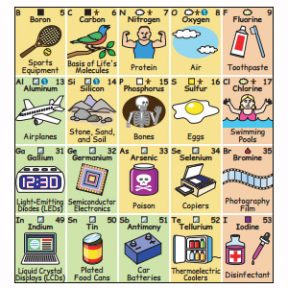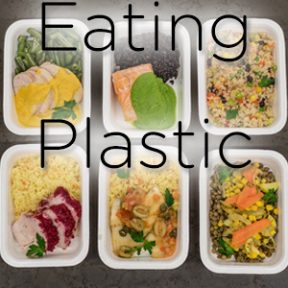 After 24 years of school (Merit Academy, Stanford Undergrad, Stanford Medical School, and Harbor-UCLA EM Residency), I’m proud to say that Nicole is officially an Emergency Medicine Doctor!
After 24 years of school (Merit Academy, Stanford Undergrad, Stanford Medical School, and Harbor-UCLA EM Residency), I’m proud to say that Nicole is officially an Emergency Medicine Doctor!
We watched her graduate with her 15 co-residents on the Queen Mary in Long Beach, CA. She starts her EMS Fellowship at UCSF in 2 weeks where she plans to develop efficient systems for pre-hospital care and disaster preparedness protocols. Nicole D’Arcy was in the first graduating class at Merit Academy, and she has set the bar and serves as a role model to so many Merit students.
Congratulations Nicole!

 After 24 years of school (Merit Academy, Stanford Undergrad, Stanford Medical School, and Harbor-UCLA EM Residency), I’m proud to say that Nicole is officially an Emergency Medicine Doctor!
After 24 years of school (Merit Academy, Stanford Undergrad, Stanford Medical School, and Harbor-UCLA EM Residency), I’m proud to say that Nicole is officially an Emergency Medicine Doctor!
We watched her graduate with her 15 co-residents on the Queen Mary in Long Beach, CA. She starts her EMS Fellowship at UCSF in 2 weeks where she plans to develop efficient systems for pre-hospital care and disaster preparedness protocols. Nicole D’Arcy was in the first graduating class at Merit Academy, and she has set the bar and serves as a role model to so many Merit students.
Congratulations Nicole!

 In 2008, the Norwegian government collected a million packets of seeds from around the world to place them in the Svalbard Global Seed Vault. They did this to secure seeds to protect food crops from climate change, wars, and natural disasters. It was designed as an impregnable deep-freeze so we could restart civilization in the case of a massive disaster. They buried the Global Seed Vault deep into a mountain inside the Arctic Circle with the hope that we would never need to retrieve it. Thank you Norway!
In 2008, the Norwegian government collected a million packets of seeds from around the world to place them in the Svalbard Global Seed Vault. They did this to secure seeds to protect food crops from climate change, wars, and natural disasters. It was designed as an impregnable deep-freeze so we could restart civilization in the case of a massive disaster. They buried the Global Seed Vault deep into a mountain inside the Arctic Circle with the hope that we would never need to retrieve it. Thank you Norway!
But with our extreme heat wave of 2016, meltwater has gushed into the entrance of the tunnel where the Global Seed Vault is located. The permafrost is melting and the “failsafe” protection that we were relying on in the case of a natural or man-made disaster is at risk. So far, the seeds are still safe but further melting of the permafrost leaves the Norwegians concerned. They are building a waterproof 100-meter tunnel and digging trenches to channel the water away. Thank goodness their government understands the importance of protecting seeds and searching for solutions to climate change.
I hope people are listening and doing their part to reverse climate change. I just wish our government – the oligarchs – would set policies to save civilization rather than destroy it. ARGH!
 I’m concerned about the food we eat. Everything from cheese, to meats, to oils, and grains contain irritants that cause inflammation. Even though I grow veggies in an aquaponics system and collect eggs from chickens on our property, my body is inflamed because it is reacting to the foods I eat.
I’m concerned about the food we eat. Everything from cheese, to meats, to oils, and grains contain irritants that cause inflammation. Even though I grow veggies in an aquaponics system and collect eggs from chickens on our property, my body is inflamed because it is reacting to the foods I eat.
Decades ago, it was simply choosing between organic and non-organic veggies and fruit. But today, our veggies are genetically modified (GMOs) so they grow bigger and can survive long hauls to grocery stores. The animals we eat are raised in inhumane conditions where they can’t move and never see the outdoors. And our packaged foods contain over-processed ingredients with preservatives and chemicals so they can stay fresh on the shelves for decades. This can’t be good for our bodies.
I read a fascinating article “The Truth Behind All Those Gut Health Claims; No Alternative Facts Here.”
It discusses how the digestive system affects every organ in our bodies and how what we eat affects our energy, immune system, mental agility, happiness, and skin. My doctor just recommended that I cut out meat and dairy to cut inflammation and to better regulate my blood sugar.
Sounds like we need to go back to eating food the natural way – the way they grow out of the ground. Not sure about cutting out meat though!
[Source]
 I’ve got exciting news: Jaclyn will start Kellogg’s School of Management on June 21st. It’s part of Northwestern University in Chicago, and it’s ranked #4 in the nation.
I’ve got exciting news: Jaclyn will start Kellogg’s School of Management on June 21st. It’s part of Northwestern University in Chicago, and it’s ranked #4 in the nation.
While many of the MBA students fly in for weekend classes, Jaclyn will be moving to Chicago for 15 months so she can take full advantage of the incredible marketing courses, professors, and networking. She is thrilled to have this opportunity to meet high-caliber business students who share her passion for marketing.
We’re so proud of her! And we’re happy that she plans to return to the Bay Area next September!
 On August 21st, there will be a total solar eclipse that will travel coast to coast across America. The path is about 68 miles wide and if you’re on the path, you’ll see the total eclipse for about 2 minutes and 40 seconds. The light show, however, will last for hours.
On August 21st, there will be a total solar eclipse that will travel coast to coast across America. The path is about 68 miles wide and if you’re on the path, you’ll see the total eclipse for about 2 minutes and 40 seconds. The light show, however, will last for hours.
The 19 best places to catch the eclipse, according to Men’s Journal, are as follows:
Nashville, TN (1:27 pm)
Columbia, MO (1:12 pm)
Nantahala National Forest, NC
Stanley, ID (11:28 am)
Salem, OR (10:17 am)
Greenville, SC (2:38 pm)
Carbondale, IL (1:20 pm)
Jackson, WY (11:34 am)
Grand Island, NE (12:58 pm)
Blairsville, GE (2:34 pm)
Greenwood, SC (2:39 pm)
Charleston, SC (2:46 pm)
Wind River, WY (11:39 am)
Lincoln City, OR (10:16 am)
Jackson County, NC (2:36 pm)
Cascade, ID (11:27 am)
Great Smoky Mountains National Park, TN
Alliance, NE (11:49 am)
Casper, WY (11: 42 am)
If you miss this solar eclipse, there’s another one in 2024!
[Source]
 Taking our “puppies” for a walk is an upper-body workout – literally. On Mother’s Day, Jaclyn, Alex, and I took Beckett, Jersey, and Radar to Pleasure Point for what we thought would be a casual stroll on beach. Instead, we had to separate the pups because of their power play – and our exhaustion as we tried to get them to “heel.” Yeah right… So much for our puppy training classes.
Taking our “puppies” for a walk is an upper-body workout – literally. On Mother’s Day, Jaclyn, Alex, and I took Beckett, Jersey, and Radar to Pleasure Point for what we thought would be a casual stroll on beach. Instead, we had to separate the pups because of their power play – and our exhaustion as we tried to get them to “heel.” Yeah right… So much for our puppy training classes.
Then Michael brought his son Micha to visit and when Micha said, “SCARED!”, I could only image the fear he felt as 2 giant puppies ran down the driveway to greet him. They still don’t know their strength or weight as they often miss their target and slam into us because they can’t stop in time. Luckily for Micha, Rob and Michael were there to lift him out of harm’s way.
While Beckett and Jersey are still getting used to their growing body masses, they are absolutely the sweetest dogs we’ve ever had. They love to lean on us while we cook and come to us on command. They’re well trained and they even stay off of our carpets; they’re allowed on hardwood floors only!

 Yesterday I blogged about the new Periodic Table that has pictures and words to help you make sense of the elements and how we use them.
Yesterday I blogged about the new Periodic Table that has pictures and words to help you make sense of the elements and how we use them.
Today, I have a song that’ll help you memorize the Periodic Table – if you need to for school. Check it out: https://youtu.be/VgVQKCcfwnU.
Remember memorizing the 50 states by singing a song? Same concept and it’s very cool.
And if you want to see a 7-year-old boy sing it, check this out: https://youtu.be/tWcylfGWu9U. Get ready to sing the entire Periodic Table!
 I love this new periodic table that shows you how we use these elements.
I love this new periodic table that shows you how we use these elements.
You can print this out for your kids, and they even have an interactive chart that pops up more information, images, and interesting facts about each element.
Finally, a fun way to learn the Periodic Table!
 I dread having photos taken of me. I know that might sound crazy since I take about a thousand photos per month – of everyone else! I usually freeze with a strained smile, and then my lips do weird things. Then I become super self conscious about my lips, and then people ask what’s wrong with my lips! So then my face gets distorted as I try to make my lips look normal. Oh the vicious cycle.
I dread having photos taken of me. I know that might sound crazy since I take about a thousand photos per month – of everyone else! I usually freeze with a strained smile, and then my lips do weird things. Then I become super self conscious about my lips, and then people ask what’s wrong with my lips! So then my face gets distorted as I try to make my lips look normal. Oh the vicious cycle.
That’s why I was so intrigued when I read this article “10 Easy Steps to Looking More Photogenic.” I like tips that I can consciously do so I don’t fret about things I can’t control (like my face!). I like Tip #7 the best: Close your eyes, take a deep breath, open your eyes, and smile!
So if you don’t think you can take a good photo, try reading these 10 tips!
After 10 years, I finally replaced my last profile photo that I’ve used for business and social media. Maybe I won’t wait another 10 years to post a new photo!
 I remember during the Vietnam War that autopsies performed on our thousands of young soldiers showed that there was Styrofoam in their bodies. After eating and drinking out of Styrofoam containers, the polystyrene leached into their bodies and stayed there for life. I thought those days were gone because we banned Styrofoam, and later BPA (Bisphenol A) in water bottles. But a recent study now shows that children have harmful plastics (phthalates) in their bodies.
I remember during the Vietnam War that autopsies performed on our thousands of young soldiers showed that there was Styrofoam in their bodies. After eating and drinking out of Styrofoam containers, the polystyrene leached into their bodies and stayed there for life. I thought those days were gone because we banned Styrofoam, and later BPA (Bisphenol A) in water bottles. But a recent study now shows that children have harmful plastics (phthalates) in their bodies.
Our food production techniques have become “mass production” due to overpopulation and corporate greed. Meat for burgers is extruded through PVC tubing, bulk supplies of grain are stored in plastic containers, and virtually all food is wrapped in plastic. The fast food industry is the culprit because food servers wear PVC gloves, food is wrapped or stored in plastic containers, and fast food is often reheated or assembled on plastic surfaces.
Studies show that people who eat fast food have more phthalates in their bodies than their counterparts who eat organic and fresh foods. Children who eat school meals have 100% more phthalates in their bodies according to an Italian study. In a food monitoring and duplicate diet study conducted in Japan, they found that people who ate fast food prepared by servers who wore PVC gloves during the preparation and packaging of the meals had a demonstrated increase in phthalates in their bodies. And because grains typically hold meals together like they do in burritos and sandwiches, they have more contact with plastic packaging materials.
The industrialization of our food production, processing, and handling is causing us to develop health problems. Sadly, it’s the poor and minorities who eat fast food and school lunches because it’s less expensive. My recommendation is to grow your own veggies, stay away from fast food, and store/reheat your food in glass containers. We need to consciously make decisions about our food intake in order to stay healthy.
Sources:
https://ehp.niehs.nih.gov/15-10803/
(Tsumura et al. 2001a, 2001b).
(Chronic Hazard Advisory Panel on Phthalates and Phthalate Alternatives 2014; U.S. EPA 2012).










